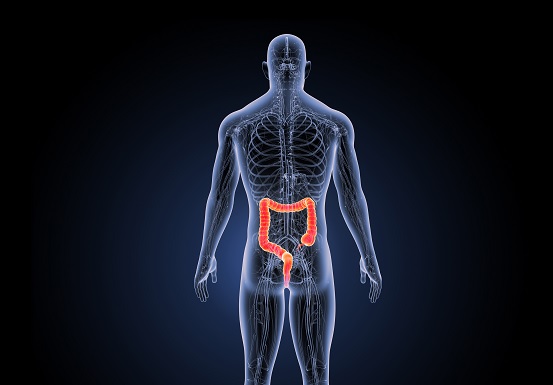A New Solution to Diagnosing Reflux

Though less prevalent in Asia than in the West, a growing number of adults in Singapore experience the uncomfortable symptoms associated with gastroesophageal reflux disease (GERD). Some can encounter difficulties in determining a clear diagnosis. Dr Reuben Wong, a gastroenterologist and adjunct associate professor, sheds new light on a procedure that can determine the causes of reflux with ever greater clarity.
GERD is characterised by discomfort when the stomach’s contents reflux back up into the esophagus. Symptoms such as heartburn, an acidic taste in the throat, and stomach or chest pain commonly occur as a result of reflux. In mild cases, reflux can be treated by making lifestyle changes such as quitting smoking and altering unhealthy eating habits.
In more severe cases where symptoms occur frequently, antacids and acid-suppressive medication can be prescribed. In instances when medications are not effectively treating the reflux symptoms, a patient can be encouraged to take an endoscopy, a procedure involving a small camera mounted on a flexible tube that is used to examine a person’s digestive tract. But this isn’t always enough to determine what’s wrong.
TREATING THE ROOT
“For a lot of people who have undergone an endoscopy, we come away without clear evidence for the causes of the acid reflux,” says Dr Wong, explaining the frustration that some patients face when seeking a diagnosis for their severe reflux symptoms. “Research shows that the bulk of people with GERD do not have any findings through the scope, but they keep having symptoms. This can be extremely frustrating for patients.”
When asked about the prevalence of GERD in Singapore, Dr Wong recalled an NUS study that examined a community in Jurong which found that the percentage of respondents diagnosed between 1994 and 2000, representing some 10.5 percent of residents in the estate.
“Popping an antacid or tums may be a short term measure, but you are not really sorting out the underlying issue. It’s crucial to treat the root of the symptoms,” says Dr Wong. The solution to patients facing this predicament, the gastroenterologist carefully explains, is a procedure called pH-Impedance, which allows doctors to observe a patient’s reflux activity in precise detail to determine the cause of symptoms.
CHANGING THE GAME
“The procedure answers three important questions: Is there reflux or not? If yes, is the reflux acidic or not acidic? And lastly, is reflux the cause of symptoms? This technology gives us amazing resolution and actually allows us to determine these factors with a huge level of clarity,” says Dr Wong.
“If you speak to a few patients that suffer from severe reflux, you’ll find their scopes come out normal, but they feel terrible. They feel like they are out of options. This procedure is really a major game changer for these patients,” he says.
Whereas most patients with reflux don’t experience serious enough symptoms to warrant endoscopy and can be treated adequately by a general practitioner, the pH-Imepedance procedure is intended for patients suffering with atypical symptoms like chest pain, breathlessness and dental erosions, and those with more significant reflux symptoms that have not been accurately identified through an endoscopy.
MAPPING THE PROCEDURE
“This procedure was first introduced to Singapore a couple years back; a small handful of specialists pioneered it. Although reflux is not deadly, it is very prevalent and patients suffering from it want answers. That is how this procedure has caught on,” says Dr Wong. pH-Impedance allows for monitoring of gastric activity by way of a thin electronic wire inserted down the esophagus through the nasal passageway.
“The procedure is perceived as invasive because there’s a wire going into the nose. But in reality, if you compare it endoscopy, it isn’t,” he explains. “The procedure begins with a manometry in which we place a catheter down the esophagus, which allows us to see an entire roadmap of the procedure and accurately measure the esophagus.” Dr Wong says the procedure is no more dangerous than using a feeding tube and the catheter stays in for only 15 minutes.
The catheter is then taken out and replaced with a thin electronic wire, which is secured outside the nose with a bit of surgical tape. This wire is worn in place for 24 hours with minimal discomfort, during which time the patient can go about their normal routine, provided they refrain from swimming and avoid contact with magnets.
“The electronic wire is able to measure every blech, swallow and reflux, enough to produce half a gigabyte of data over 24 hours. Based on that, we are able to quantify the total number of reflux episodes and narrow down the reflux symptom correlation,” the gastroenterologist explains, in reference to a sample of a patient’s data chart shown on the device’s electronic display.
GUIDING THE TREATMENT
“We may discover the patient has functional heartburn or chest pain, rather than reflux. We can then say very conclusively that such a patient would not require acid suppressant medications,” he explains. “In terms of accuracy, the test is currently the gold standard for measuring reflux. These results will guide a patient’s treatment with greater accuracy.”
While the electronic wire is inserted, a patient can press a button on an accompanying device when their symptoms occur. This enables a gastroenterologist to look back over the corresponding time window when analysing the results to determine if an episode of reflux has occured. From there, it becomes much easier to narrow down the patient’s symptom-reflux association.
“You send a patient for endoscopy if they have persistent or alarming symptoms. If endoscopy doesn’t resolve it, we go ahead with this procedure,” says Dr Wong, adding, “it is not designed to be a replacement for endoscopy, but it is complementary.”
For Singaporeans who have long struggled to get a definitive diagnosis of their reflux symptoms, the pH-Impedance procedure is one of the most accurate methods for gaining clarity into the causes of their persistent symptoms.
Article contributed by Dr Reuben Wong, an accredited doctor at Mount Alvernia Hospital.
This article is taken from our My Alvernia Magazine Issue #30. Click here to read the issue on our website or on Magzter.



